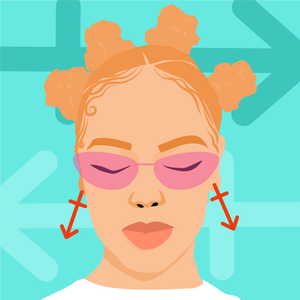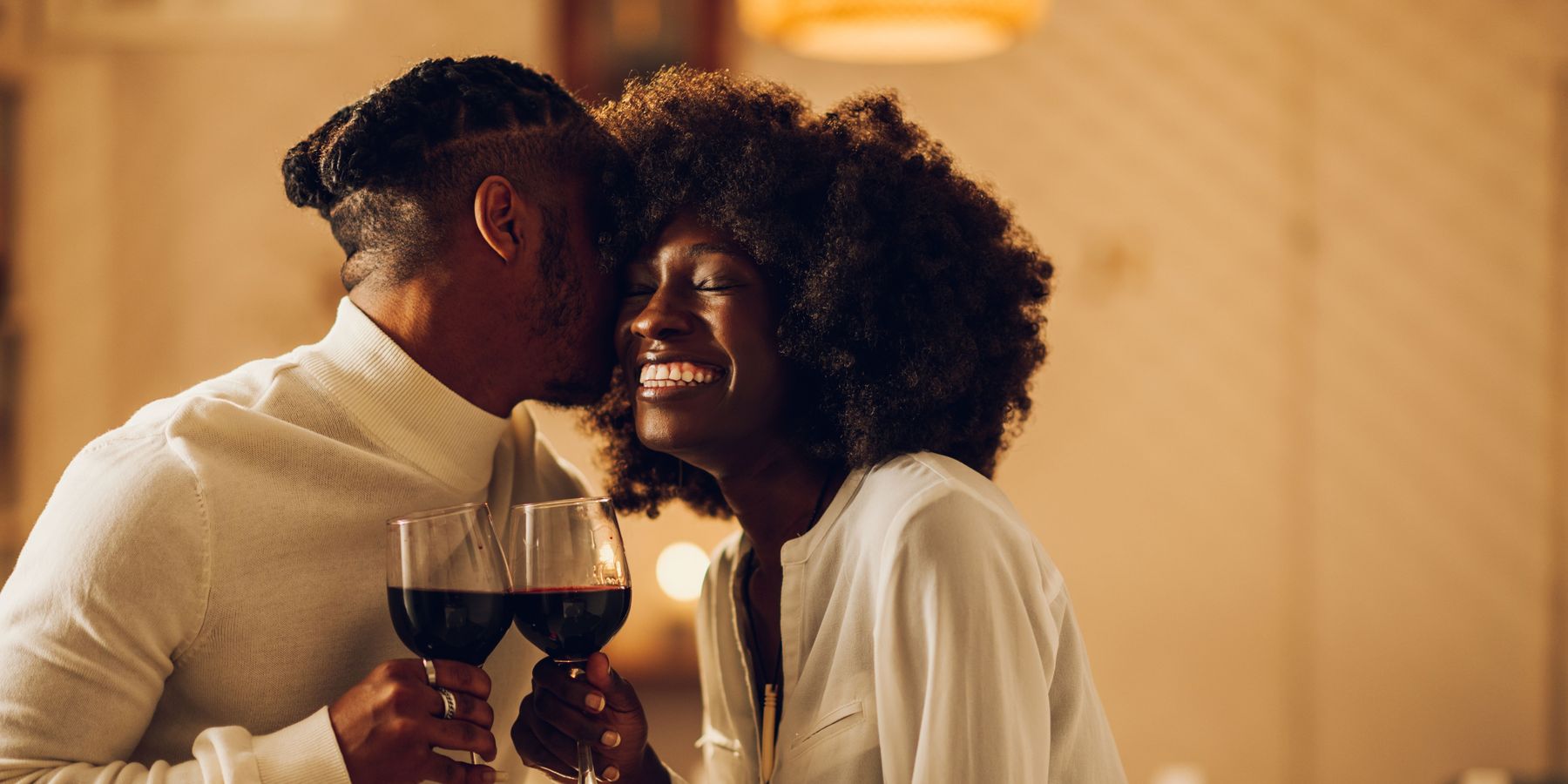
I feel pretty confident in saying that most of us are huge fans of foreplay. And since foreplay consists of actually touching your partner, doesn't it make sense that certain spots actually…hit the spot? On the surface, while you might think that I'm referring to erogenous zones, I'm actually talking about pressure points that will not only intensify your sexual experiences but can offer up all sorts of other health benefits too.
If you're ready to help your partner have even more enjoyable climaxes (as they hopefully do the same for you), here are seven places that, if you take 10-20 minutes to massage them, can result in a euphoric feeling that is truly like no other. (Just make sure to dim the lights and have a DIY massage oil on hand.)
7 Pressure Points for Better Sex
1. Head
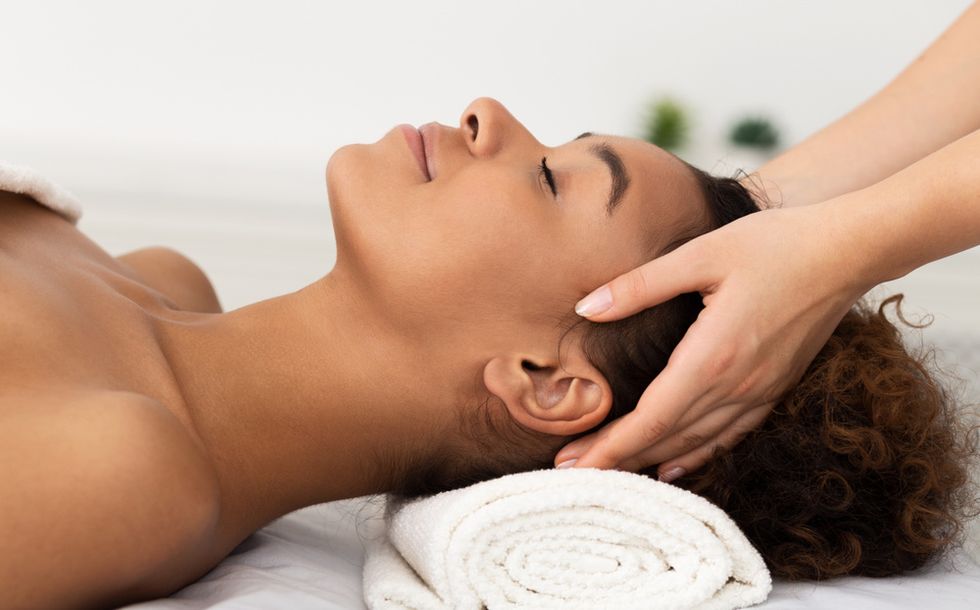
You've probably heard that the greatest sex organ is your brain (I've certainly said it a few times on this platform). So, of course, it makes complete and total sense, why a head massage would be a great way to get your partner in the mood for sex.
On the health tip, it releases tension, eases headache and migraine discomfort and helps to relax the body (it also promotes hair growth and lowers your blood pressure). Sexually, a head massage can help to calm down an overactive mind as it also encourages blood to flow more freely throughout the body.
Head Massage Tip: Dab a mixture of sweet almond oil and lavender essential oil onto your fingertips (the lavender scent is calming and the almond oil will prevent any mild abrasions; lavender oil is pretty potent). With a medium amount of pressure, massage your partner's temples in small circular motions for five minutes, then move up to their scalp for an additional five. By the way, it's best if they are sitting in a comfy chair when you do this; it'll help to take some of the strain off of their back.
2. Ears
Ears are considered to be an erogenous zone. Plus, they contain somewhere around two hundred pressure points that are directly connected to various parts of the body. Both of these are valid reasons why ears made this list. The interesting thing about this part of the body is, when you massage the left earlobe, it stimulates the right brain and pineal gland and, when you massage the right one, it stimulates the left brain and pituitary gland. Consistent massaging of the ears helps to increase blood circulation and boost one's immunity. It also encourages the production of endorphins in order to relieve muscle-related pain and discomfort. As a bonus, you can boost your partner's libido if you rub on these pressure points a bit.
Ear Massage Tip: All of us have something that's known as the Bosch point; it's located on both ears. Basically, it's the thin part of our ear that, if we bent it towards our face, it would easily fold into our ear's canal. If you gently massage that area on both sides, and you add a little nibbling and/or dirty talk into the equation, I promise you that things will be on and poppin' within a couple of minutes.
3. Stomach
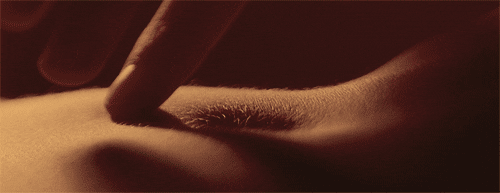
Did you know that a stomach/abdominal massage can improve digestion, relieve constipation, reduce bloating, strengthen and tone stomach muscles, release tension and aid in weight loss? Two other benefits are it can calm your senses and help your orgasms to last a little longer. The key is to be as gentle as possible, perhaps even giving a few kisses to the tummy region along the way.
Stomach Massage Tip: In order to get the best results, make sure to focus on the areas that are a couple of inches underneath your partner's belly button, and also the part that is right above their crotch. If you slightly apply pressure, it will get their blood to circulating and, it will definitely arouse their genitals in the process.
4. Back
Back massages do all sorts of great things. They help to release muscle tension from the spine. They increase blood circulation to your body's muscles and tissues. And sexually, they help to "trigger" the feel-good hormones that naturally run throughout your system as they increase body's mobility too. (Yes, back massages can actually make you more limber!)
Back Massage Tip: If you want to make this kind of massage extra soothing, warm up some massage oil. Then ask your partner to lay on their stomach on the bed. Place each hand, flat, on each side of your partner's spine and slowly move your hands upward until you reach their shoulders. Then use your thumbs to massage their shoulder blades in a circular motion. You should feel tension leave their body as you're actually doing it.
5. Butt

There are a lot of people who tell me that, as they get older, their lower back doesn't quite work the way that it used to (if you know what I mean). One thing that can help to get it back into action is to receive a glutes (butt) massage. It's a great way to regain some strength and agility while increasing blood circulation to your genital region and making your orgasms more intense as a direct result.
Butt Massage Tip: An easy way to relieve the stress, pain and pressure that may be lodged in your partner's glutes is to run a foam roller over them. You can typically get them at stores like Walmart or Target for under 20 bucks. Or, if you'd like to watch a video on how to give an effective butt massage, click here.
6. Calves
Have you ever gotten a charley horse during sex? I have and it sucks because it always seems to come right before, well, you know. Aside from making sure that you have enough liquids and potassium in your system, something else that you can do to decrease you and your partner's chance of having these super annoying muscle spasms is to give calf massages. They improve blood circulation, reduce any scar tissue that your calf muscles may have on them and, they help to decrease pain as well.
Calf Massage Tip: Warm up some coconut oil. Have your partner lay on the stomach on the bed. Use a medium amount of pressure in order to rub their legs from their thighs down to their ankles, using your knuckles to gently kneed any areas that might be extra tight. Do this for about six minutes per leg. It'll feel like heaven to them.
7. Feet
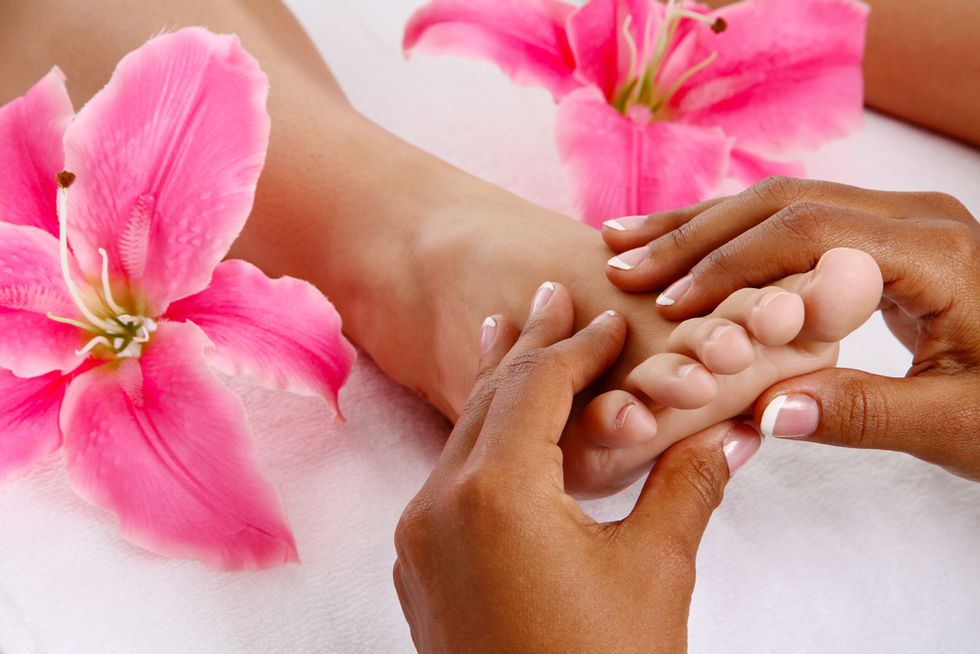
Reflexology is pretty dope. The premise of it is that, by massaging the hands, ears and yes, feet, you can soothe your nervous system and even help to heal various parts of your body. Since there are approximately 7,000 nerve endings in our feet, you can probably see why it's such a good idea to give them a good rub every now and then. Feet massages can do everything from eliminating toxins in your body and boosting your brain power to reducing period pain and relieving headaches. And yes, it can also make your sexual experiences better. That's because reflexology has a way of releasing the stress hormones in your system that may be hindering your ability to get fully aroused.
Foot Massage Tip: Something that can easily put your partner in the mood is to apply a gentle amount of pressure underneath the balls of both of their feet. Do this by pushing in that area with your thumbs and holding for a count of 10. If you then follow that up by using your thumbs to "walk" from their heels to each of their toes, it will help to release anxiety and elevate their libido too. Now get to rubbing—and make sure that your partner returns the favor!
Want more stories like this? Sign up for our newsletter here to receive our latest articles and news straight to your inbox.
Featured image via Shutterstock
- 16 Male Erogenous Zones To Stimulate During Sex, According To ... ›
- Erogenous Zones 101: Surprising Pleasures Points to Trigger ... ›
- The 11 Hottest (Unexpected) Erogenous Zones for Women | Glamour ›
- The A-spot is the sexual pleasure point that could unlock the best ... ›
- 8 Sex Massage Pressure Points You Need to Know - Beducated ... ›
- Acupressure for Good Sex — Cicuto Acupuncture ›
- Erogenous Zones - Turn on Man with Male Erogenous Zones ›
- 31 Erogenous Zones & How to Touch Them: A Chart for Men ... ›
- Top 5 pressure points for female orgasm - Times of India ›
- 5 Best Massage Points for Seduction, Relaxation, and Sex ›
This Is How To Keep 'Holiday Season Stress' From Infecting Your Relationship
Hmph. Maybe it’s just me, but it seems like there is something really weird happening in the fall season air (because winter doesn’t officially begin until December 21) that cuddle season is in full swing while break-up season is as well. In fact, did you know that break-ups are so popular during the holiday season that December 11 is deemed Break-Up Day?
The reasons why relationships shift around this time vary; however, I did both roll my eyes and chuckle when I read that a very popular one is because it’s an easy way to get out of getting one’s significant other a Christmas present. SMDH.
Anyway, I personally think that the less shallow folks out here may contemplate calling things “quits” or they at least distance themselves a bit from their partner (and what I’m referring to is serious relationships) due to all of the stress and strain that oftentimes comes with the holidays whether it be financial, familial, due to their tight schedules or something else.
Listen, I would hate for you and your man to miss the fun and happiness of experiencing this time of year, all because you are so overwhelmed or irritated that you can’t really enjoy it. That’s why I have a few practical tips for how to avoid allowing the typical holiday season stress from INFECTING your relationship.
Manage Your Expectations
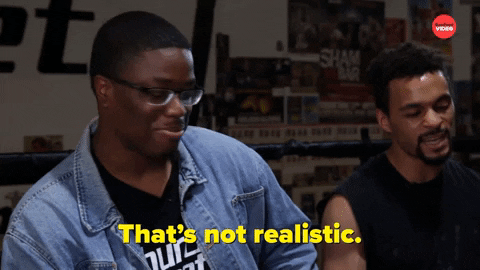 Giphy
GiphyUnmanaged expectations. If there is a main reason why the holiday season tends to be so stress-filled for so many people, I’d bet good money that this is the cause. And when you’re in a long-term relationship, expectations can manifest themselves in all sorts of cryptic and/or unexpected ways. You might have relatives who assume that you are going to be with them for Thanksgiving or Christmas when you have other plans in mind. You might be thinking that you are going to spend one amount for presents while your man is thinking something totally different. When it comes to scheduling, your signals may be crossed.
And you know what? To all of these scenarios, this is where clear and consistent communication come in. Don’t assume anything. Don’t dictate anything either. From now until New Year’s, mutually decide to check in once a week, just to make sure that you are both on the same page as it relates to the holidays and what you both are thinking will come along with it. The less blindsided you both feel, the less stressed out you will be. Trust me on this.
Set (and Keep) a Budget
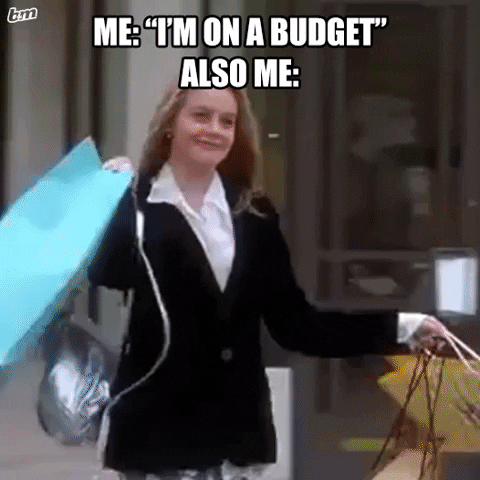 Giphy
GiphyOkay, so I read that last year, 36 percent of Americans incurred some type of holiday-related debt. Hmph. Last year, there was still some sense of normalcy in this country, chile, so I can only imagine what finances are gonna look like over the next several weeks. That said, since I don’t know a lot of people who don’t find being broke stressful, make sure that you and your bae set a budget and then stick to it this year — no ifs, ands or buts.
Because really, y’all — it doesn’t make sense to deplete savings and/or max out credit cards for a few days of giggles only to be damn near losing your mind because you don’t know how to make ends meet come Dr. Martin Luther King, Jr. Day.
And by the way, this tip doesn’t just speak to things like food and gifts; I also mean travel. If it doesn’t make a ton of sense (or cents) to be all over the place this year — DON’T BE.
Keep Matthew 5:37 at the Forefront
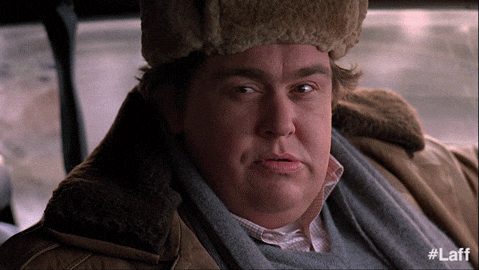 Giphy
GiphyIf off the top of your head, you don’t know what Matthew 5:37 says, no worries, here ya go: “But let your ‘Yes’ be ‘Yes,’ and your ‘No,’ ‘No.’ For whatever is more than these is from the evil one.” That verse right there? Oh, it’s a boundaries lifesaver! I say that because do you see “maybe” or “I’ll think about it” in there? Nope. LOL. It says that you should tell people “yes” or “no” and leave it at that — and that complements Anne Lamott’s quote, “’No’ is a complete sentence” impeccably well. Yeah, you’ve got to remember that anything beyond a yes or no to a request is privileged information; you don’t owe anyone details or an explanation.
Besides, if you are really honest with yourself, when someone asks you something and you give a “Umm, let me think about it” kind of reply, more times than not, you already know what your answer is going to be — so why not let you both off of the hook? Give your response. Commit to that. And let everyone (including yourself) get on with their lives and schedules.
I promise you that when it comes to those holiday parties, you are pissing more folks off by not RSVP’ing or doing so and not showing up than just saying, “Thank you but not this year” off the rip.
Remember That Your Personal Space Is Privilege Not a Right
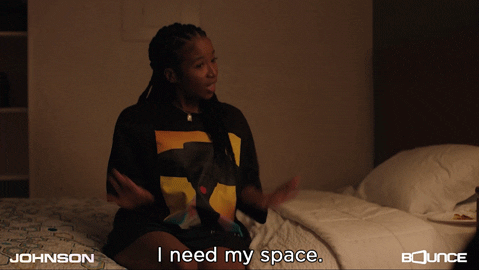 Giphy
GiphyA friend of mine recently bought a new house and invited me over to come see it. He’s a single man with no children, so as I was taking in all of the space that he had, especially as I walked through his finished basement, I joked about relatives coming to live with him. “Hell no” and “absolutely not” were pretty much his immediate responses as he went on to say that some folks even had the nerve to be offended when he told them that he had no intentions on taking DNA in.
Ain’t it wild how people think that your stuff is their right? And yes, that brings me to my next point. Your home is your sanctuary space. If you want to host folks this year — cool. If not, ALSO COOL. Please don’t let folks (family included) guilt you into how they want you to act or even into what they would do if the shoe was on the other foot. You are not them — and as one of my favorite quotes states, “If two people were exactly alike, one of them would be unnecessary.” (A man by the name Larry Dixon said that.)
Hell, my friends? They know that I am good for sending them random things that they need or even want all throughout the year. Coming over to hang out at my pace, though. Uh-uh. Chalk it up to being a card-carrying member of the ambivert club yet I like keeping my living space personal — and I sleep like a baby, each and every night, for feeling that way.
Always remember that your space, your time, your resources, your energy and shoot, yourself period (including your relationship), are all things that are your own. You get to choose how, when and why you want to share them. The holiday season is certainly no exception.
Cultivate Some “You Two Only” Traditions
 Giphy
GiphyIt’s not uncommon for some couples to hit me up after the holiday season to “detox.” Sometimes it’s due to the financial drama (and sometimes trauma) that they experienced. Sometimes it’s because they allowed their relatives (especially in-laws) to get more into their personal business than they should’ve. More than anything, though, it tends to be because they didn’t get enough quality time together and so ended up feeling “disconnected.”
Please don’t let that happen. Listen, I’m not even a holidays kind of woman and yet, I will absolutely sit myself down with some hot chocolate and chocolate chip cookies to enjoy a Hallmark holiday film or two. Aside from the fact that most of them are lighthearted and sweet, I also like that they usually focus on couples loving on each other amidst all of the holiday beauty and ambiance — which is something that all couples should set aside some time to do.
Maybe it’s a vacation. Maybe it’s a staycation. Or maybe it’s my personal favorite, A SEXCATION. Whether it’s for a few days, the weekend or even overnight — don’t you let the holidays go by without setting aside time for you and your man to celebrate one another. Don’t you dare (check out “Are You Ready To Have Some Very Merry 'Christmas Sex'?”).
GET. SOME. REST.
 Giphy
GiphyI once read that 8 out of 10 people get stressed out over the holidays and 3 out of 10 lose sleep during to it — and when you’re stress-filled and sleep-deprived, that can absolutely lead to hypersensitivity, making mountains out of molehills and even not being in the mood for sex.
Your relationship can’t afford to go through any of this, so definitely make sure to prioritize rest. I don’t care how unrealistic it might seem during this time, sleep should never be seen as a luxury; it will always and forever be a great necessity.
That said, try to get no less than six hours of shut-eye in (check out “6 Fascinating Ways Sex And Sleep Definitely Go Hand In Hand”) and even ask your bae to take a nap with you sometimes (check out “Wanna Have Some Next-Level Sex? Take A Nap, Sis.”). Not only will sleep help to restore your mind, body and spirit but, when it’s with your partner, it’s an act of intimacy that can make you both feel super connected, even in the midst of what might feel like chaos.
___
Holiday season stress is real. Still, never give it the permission or power to throw your relationship off. Put you and your man first and let the holidays be what they are gonna be, chile.
Let’s make things inbox official! Sign up for the xoNecole newsletter for love, wellness, career, and exclusive content delivered straight to your inbox.
Featured image by Shutterstock
Kerry Washington Says The Key To Her Signature Glow Lies In Her Wellness Routine
For more than a decade, actress Kerry Washington has lit up our TV screens in her iconic roles from Scandal to Little Fires Everywhere. But like any beloved starlet with so much to balance and maintain in their public and private life, Washington is managing to take a holistic approach to her overall wellness routine.
“I think we put an emphasis on if you look good, you'll feel good. And I think it's the opposite,” Washington tells Yahoo Life. “If I feel good, I'll look good, because I'll shine and I'll put my best foot forward."
Her from-the-inside-out approach to achieving the signature glow we’ve all grown to associate with the wife and mother of three is one that hasn’t come without its challenges. With her busy schedule and list of projects, Washington admits that if there was one thing she’d make more time for, it would be her beauty rest.
"Those are the areas that I find I struggle with more, stress and a lack of sleep,” she says. “So it's really important for me to keep challenging myself to take better care of myself.”
For Washington, self-care looks like taking time to journal her thoughts, attending therapy, meditating, and spending time with people — and pets — that bring her joy and restore her sense of peace after a stressful day.
"That sense of community of being able to be with people who I love and who love me unconditionally, I find that that can sometimes be the greatest stress reliever, and pets," she shares. "I started therapy in college, so decades ago. And it's been a really, really important tool," she explains. "When I engage in behavior that is loving, it can help me feel more loved and lovable."
While these loving behaviors may vary from day to day, Washington says that sprinkling in acts of “love and kindness” has been the key to feeling her best self, all over.
"Sometimes that means pulling myself up, washing my face, putting on sunscreen, and going out the door. And sometimes that's like cocooning in my bubble bath and taking it easy," she says. "Treating myself with love and kindness, especially my skin, my most important organ. That can be a pathway to feeling better."
Featured image by Rob Latour/Shutterstock
Originally published on July 11, 2023

